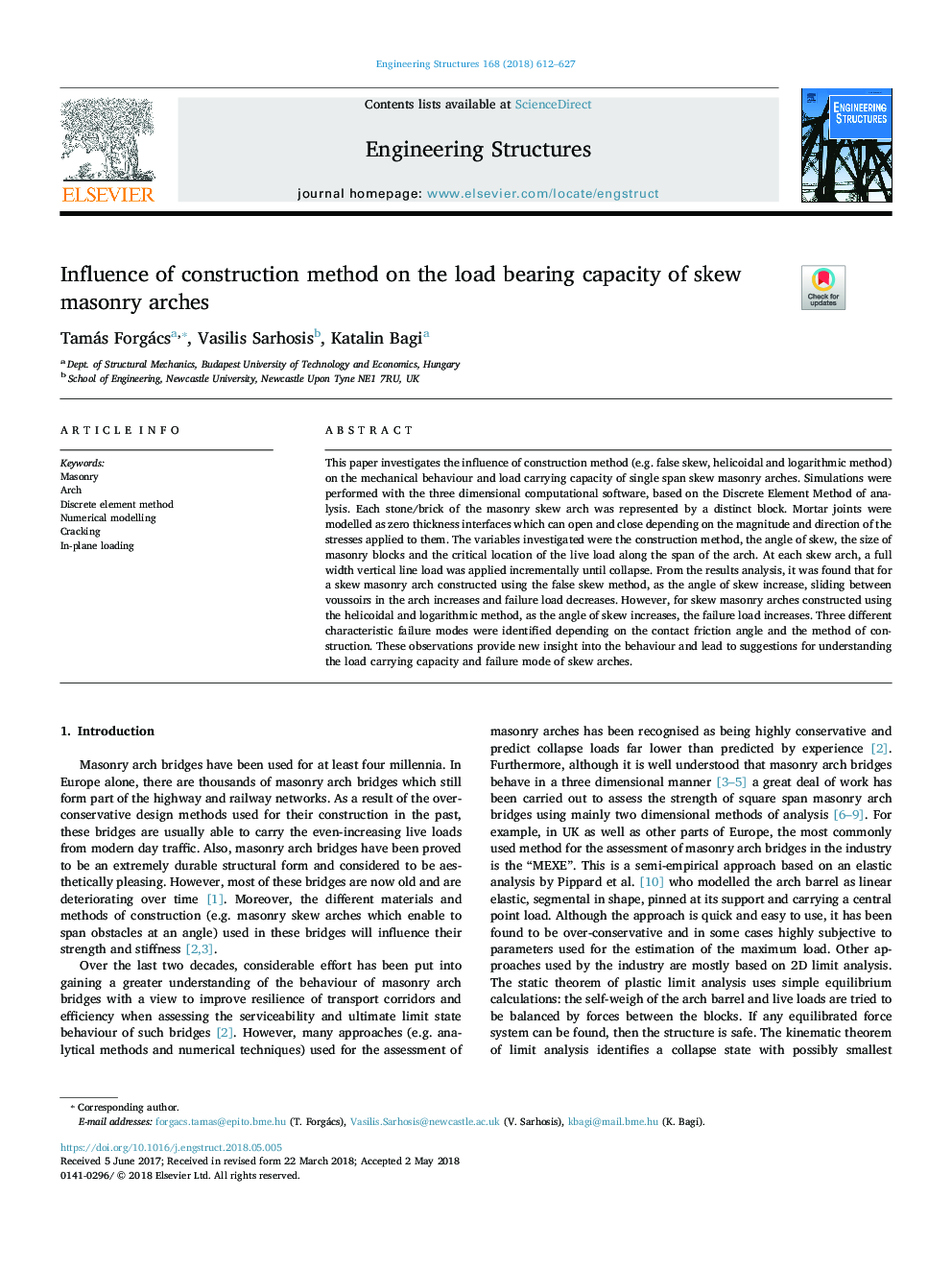| Article ID | Journal | Published Year | Pages | File Type |
|---|---|---|---|---|
| 6737158 | Engineering Structures | 2018 | 16 Pages |
Abstract
This paper investigates the influence of construction method (e.g. false skew, helicoidal and logarithmic method) on the mechanical behaviour and load carrying capacity of single span skew masonry arches. Simulations were performed with the three dimensional computational software, based on the Discrete Element Method of analysis. Each stone/brick of the masonry skew arch was represented by a distinct block. Mortar joints were modelled as zero thickness interfaces which can open and close depending on the magnitude and direction of the stresses applied to them. The variables investigated were the construction method, the angle of skew, the size of masonry blocks and the critical location of the live load along the span of the arch. At each skew arch, a full width vertical line load was applied incrementally until collapse. From the results analysis, it was found that for a skew masonry arch constructed using the false skew method, as the angle of skew increase, sliding between voussoirs in the arch increases and failure load decreases. However, for skew masonry arches constructed using the helicoidal and logarithmic method, as the angle of skew increases, the failure load increases. Three different characteristic failure modes were identified depending on the contact friction angle and the method of construction. These observations provide new insight into the behaviour and lead to suggestions for understanding the load carrying capacity and failure mode of skew arches.
Related Topics
Physical Sciences and Engineering
Earth and Planetary Sciences
Geotechnical Engineering and Engineering Geology
Authors
Tamás Forgács, Vasilis Sarhosis, Katalin Bagi,
